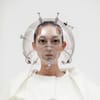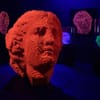“A new generation has come of age that has only lived in a world where the idea of digital self-curation is a part of their everyday lives,” reads a sentence of the press release for the exhibition Virtual Beauty, on view at Somerset House in London from 23 July to 28 September.
It explores how technology and social media are transforming self-expression and identity in the digital age, featuring more than 20 international artists working across sculpture, performance, photography, installation, and video.
Among them is Omniprésence (1993) by French performance artist ORLAN, Part Seven of her series The Reincarnation of Saint Orlan, in which she live-streamed and documented nine plastic surgery operations as a critique of Western beauty standards in art. She fused the Mona Lisa’s forehead, Venus’s chin, Diana’s eyes, and Europa’s lips into one face, to question the fractured, culturally loaded standards of beauty.
Orlan has become known for her work with plastic surgery, using her face as a canvas to mirror the features of classical female figures in art history, for example Botticelli’s Venus, to challenge female beauty ideals.
Another highlight includes Amalia Ulman’s Instagram performance piece Excellences & Perfections, a commentary on our carefully curated digital alter egos. In 2014 the artist started continuously posting about her seven months fictional makeover journey, for example pretending to have undergone breast surgery and photographing herself in a hospital gown.
In addition to these artworks, Minnie Atairu, Ben Cullen Williams, and Isamaya Ffrench will address artificial intelligence’s perception of beauty through AI-generated portraits, while Harriet Davey, Frederik Heyman, and Andrew Thomas Huang examine digital self-expression and the creation of avatars that transcend human boundaries.
To learn more about the curatorial process of the exhibition, we asked its curators Bunny Kinney—filmmaker and creative director of the arts platform NOWNESS—and Mathilde Friis, a visual anthropologist and PhD candidate at Northumbria University, how they approached the theme.
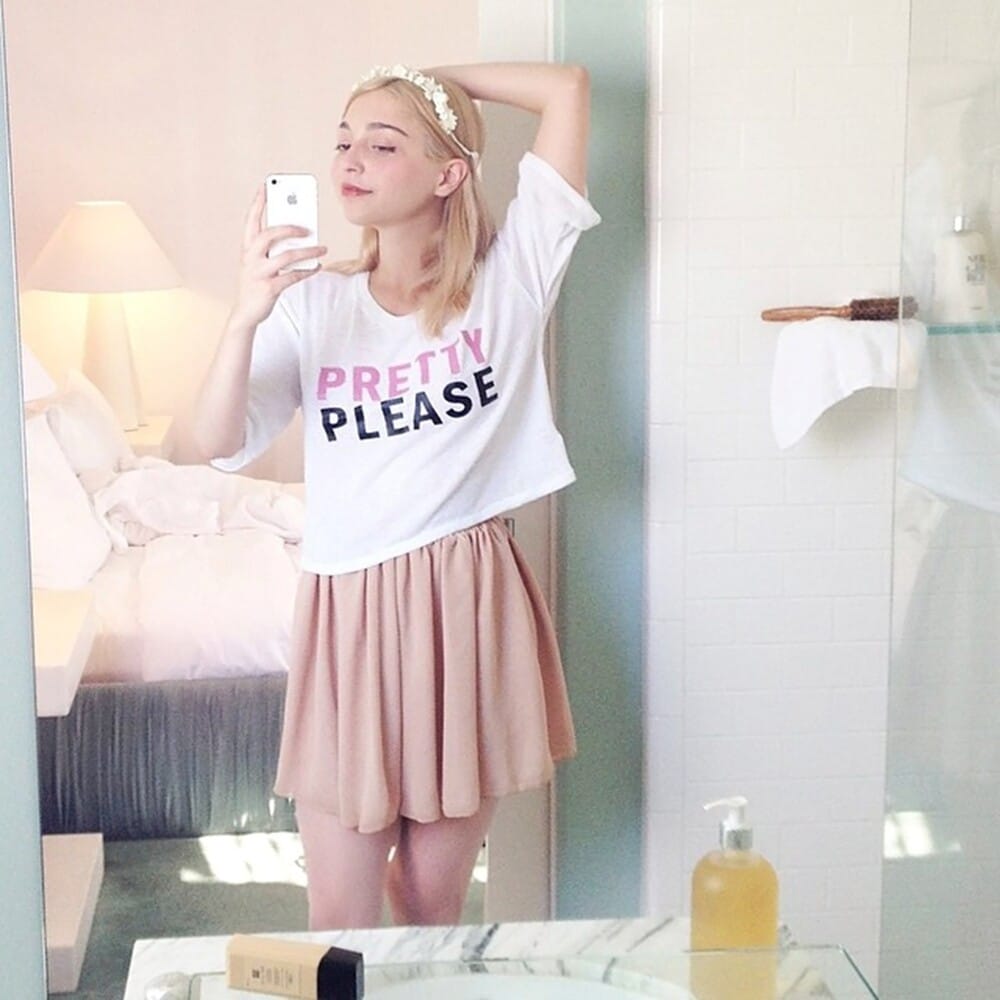
What inspired the idea for Visual Beauty?
Bunny Kinney: The initial inspiration for Virtual Beauty stemmed from my work as editor of Dazed Beauty—an experimental, slightly ahead-of-its-time beauty magazine I co-founded with visionary makeup artist Isamaya Ffrench. At the time, we were both deeply entrenched in the beauty industry: Isamaya was pushing creative boundaries in her work, while I was creating campaigns for beauty brands. Through my work, I became fascinated by how emerging technologies and social media were reshaping notions of beauty and identity, particularly among Gen Z. This curiosity led me to create Dazed Beauty with Isamaya as a platform dedicated to exploring these topics.
It was through this work that Gonzalo Herrero Delicado, who was already well-established as a curator specialising in architecture, discovered our project and approached me about developing an art exhibition centered on beauty, specifically how technology and social media were transforming art, self-expression, and identity. Mathilde then joined us, coming from an academic background focused on anthropology, which was another tenet that really underpins our approach to the subject.
The first iteration of the show at HEK in Basel felt like a group exhibition bringing together some of the most interesting multimedia artists working with these themes. At Somerset House, the show has evolved into something that feels more explicitly anthropological, offering a deeper and more reflective look at how 21st-century technology is shaping the way we perceive ourselves.

How do the questions posed by artists exploring beauty today—such as Minne Atairu, Ben Cullen Williams, and Isamaya Ffrench’s AI-driven works—differ from those raised by ORLAN’s Omniprésence in the early days of the internet?
Mathilde Friis: ORLAN’s Omniprésence was groundbreaking in the early ’90s. She used her body as a site of resistance, undergoing live-streamed plastic surgeries to challenge Western beauty standards, long before the internet became mainstream. She saw, even then, how deeply technology and identity would intertwine. Today, artists like Minne Atairu, Ben Cullen Williams, and Isamaya Ffrench are asking similar questions in a very different digital landscape, one shaped by AI, filters, avatars, and algorithms. Their work doesn’t just explore what beauty looks like, but who gets to define it and how those definitions are increasingly shaped by machines. There’s also a shift in permanence.
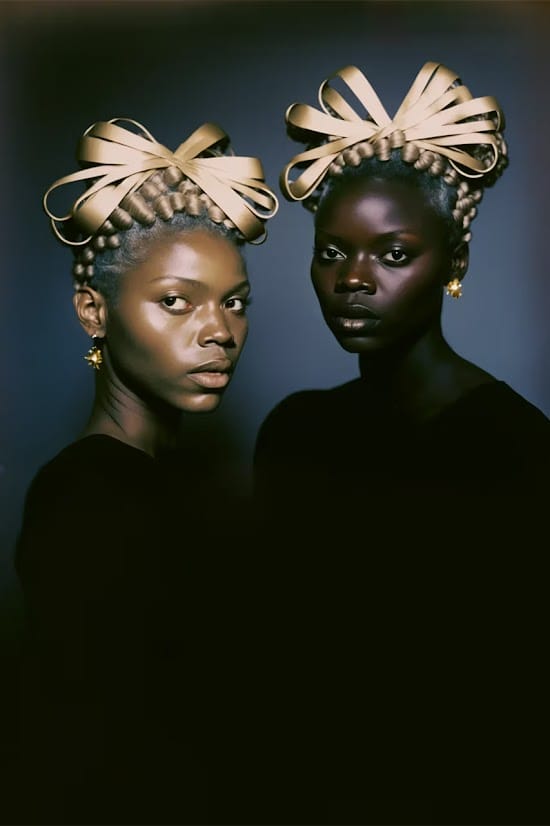
Where ORLAN’s interventions were physical and irreversible, contemporary artists work with technologies that allow identities to be endlessly rendered and remade. In Past Life, Williams and Ffrench tap into the seduction of deep fakes, while exposing how AI reshapes what we accept as “real” or “beautiful.” Atairu, meanwhile, calls out bias embedded in AI systems. Her Blonde Braids Study II shows how even advanced tools struggle to represent Black identity, revealing that the same prejudices just show up in new forms. So while the tools have evolved, the core question remains: who controls the image, and who gets seen, distorted, or erased?
What questions, reflections or leanings do you hope visitors leave with after experiencing Virtual Beauty?
Mathilde Friis: We’re not trying to deliver one singular message, we’re more interested in raising questions that encourage reflection. For example: How is technology shaping how we see ourselves? How does it influence how we present ourselves, both online and offline? Whether you’re using a filter, scrolling past AI-generated content, or just navigating beauty trends online, we want visitors to leave thinking a little more critically about those everyday experiences. Digital tools give us so much freedom, there’s real creativity and possibility in that but they also come with a lot of challenges.
We’re constantly being exposed to the same kinds of looks, the same standards, and the same ideals. And things are moving so quickly that we rarely have the space to step back and ask what it’s doing to us especially when it comes to something as intimate and personal as beauty. We also want to remind people that beauty isn’t just about aesthetics. It’s tied up with identity, with visibility, with power.
In the digital space where you can endlessly curate and edit yourself that becomes even more complex. So Virtual Beauty is about making space for those questions. It's about beauty being both personal and political, and that technology is reshaping it in real time.
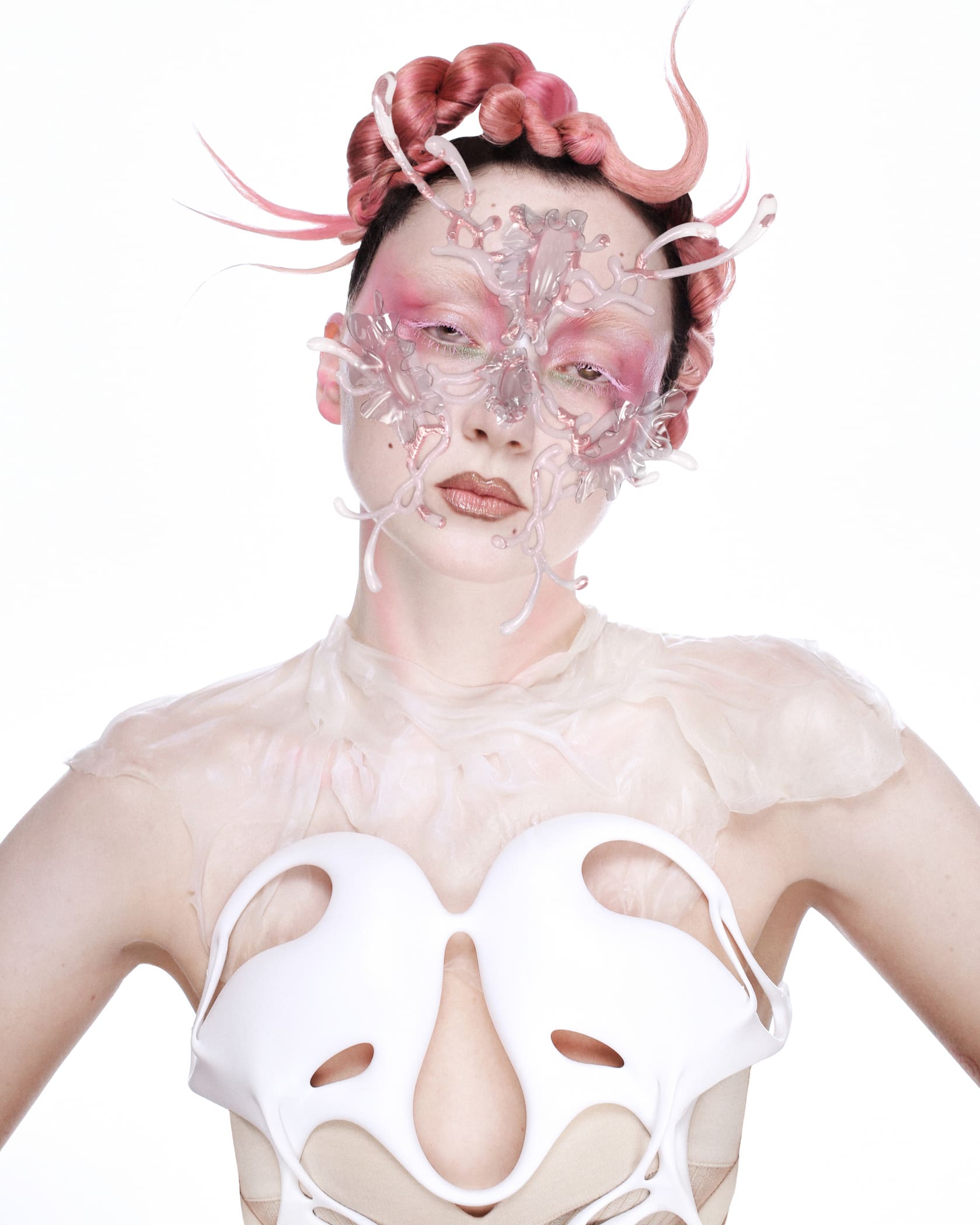
If you had unlimited resources, what would you have loved to add or expand in the exhibition?
Mathilde Friis: With unlimited resources, we would have loved to expand the interactive and immersive aspects of the exhibition. We’re living in an era where immersive technologies, from AR to VR, are reshaping how we experience art. These tools allow audiences to step inside a work, not just observe it. However, large-scale immersive installations are complex, costly, and not always easy to integrate into traditional exhibition formats. That said, they’re incredibly powerful if used in the right way in helping people understand and feel the themes we're exploring, especially something as fluid and experiential as beauty in the digital age. If we had the means, we’d create environments that adapt, react, and shift based on audience interaction. That kind of responsiveness would mirror the ever-changing nature of digital beauty itself.
Bunny Kinney: I would love to commission more artists from around the globe to respond to the theme, as there are numerous diverse perspectives that could be included in this show. Technology itself, both as a theme and as a creative tool, is timely. Even in the short time we’ve developed this exhibition, beauty has evolved in tandem with mainstream shifts in technology, such as the widespread availability and use of AI and machine learning. How are those developments affecting perceptions of beauty and expressions of identity online? How could those ideas be reflected in art? These are the questions the show has always sought to ask, and we will continue to ask afterwards.


